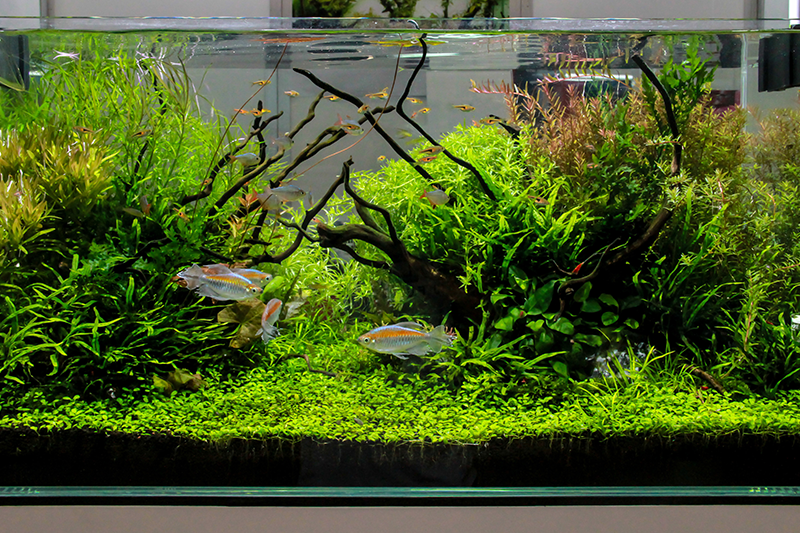Here are our best tips and tricks to creating the ideal tropical fish tank.
Choose the right tank size
Make sure to choose an adequate tank size for the fish you wish to keep. Many species of tropical fish are small to medium size, so anything from a small tank to a large tank can work to keep tropical fish. The tank size will primarily depend on how many fish you wish to keep as well as if you plan to keep live plants in your tank. The most commonly kept tropical tank sizes range anywhere between 38L and 200L in size.
Gravel choice is simple
Substrate colour is based on personal preference and any colour is fine for a tropical fish tank. Substrate size can vary but any size from freshwater sand to large stones can be used. The most common size of substrate is the ‘pea sized’ two to three millimetre sized gravel. This is a good size, as it is easy to clean.
Decorating is fun
Live plants make great decor options because they provide oxygen while using some of the organic waste produced by your fish as nutrients. Other natural decor options include decorative wood and rocks. If you pick rocks for the aquarium, be sure to use stones that are inert and will not buffer pH levels.
Good filtration is important
For a tropical fish aquarium, any style water filter will work great, however you will want to make sure that you have good water turnover to provide water movement and flow to the aquarium. Make sure you provide housing options for the beneficial bacteria that will help clean your tank and keep it free of organic waste in the form of ammonia, nitrite and nitrate. We also recommend the use of a good chemical filter to clean and polish the water.
Prior preparation for ultimate fish health
Cycling is the process of building enough good bacteria to handle removing all the organic waste from the system when you have a fully stocked aquarium. To cycle, it is best to use a very sturdy bacterial additive to support good fish health. In addition to adding bacteria, you will also need to add a food source to produce ammonia for these bacteria to encourage growth and colonisation. You can do this by adding fish, pure ammonia or even fish food to the tank to feed the bacteria. Ammonia will typically need to peak between one to two parts per million (ppm) to facilitate the cycle.
Don’t hesitate to ask your local Petbarn team member for more advice on setting up your tropical fish tank, and read our article on how to provide ongoing care for your tropical fish. You can find all the fish supplies you need for your tropical aquarium, including live fish, at Petbarn online or in-store.
Don’t miss our video on how to set up your aquarium:

